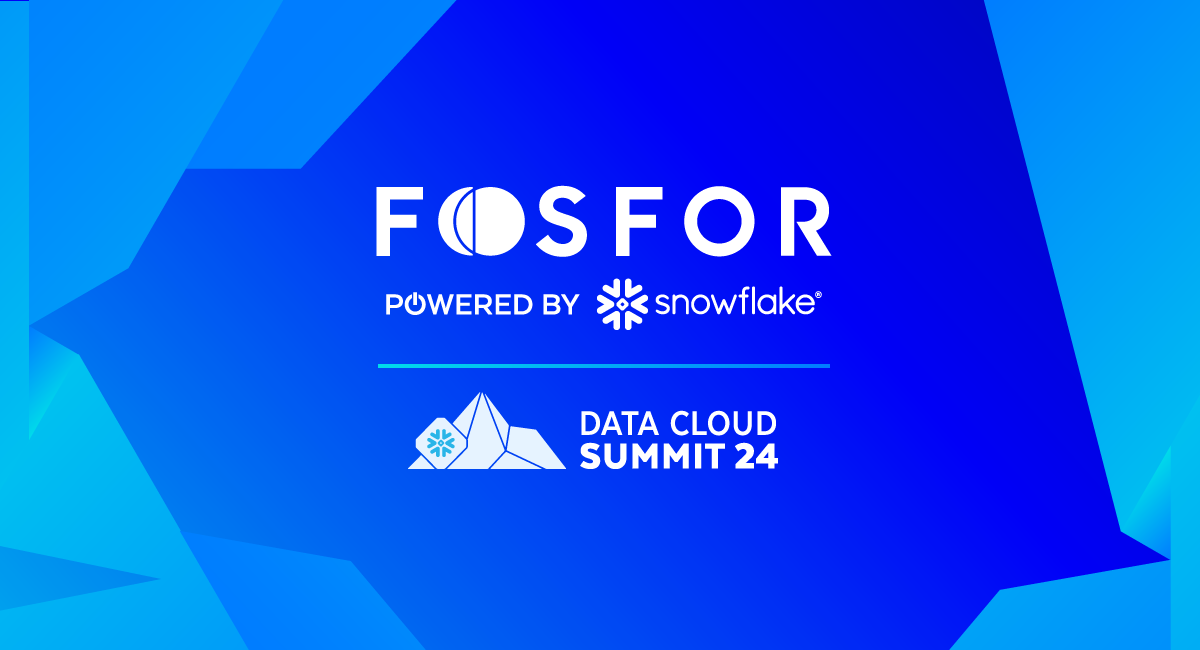 Reading Time: 8 minutes
Reading Time: 8 minutesIntroduction
In the ever-evolving landscape of banking and financial services, understanding and anticipating customer needs has become paramount. As institutions strive to deepen relationships and boost revenue, the twin strategies of cross-selling and upselling have emerged as powerful tools. However, the true potential of these approaches can only be realized through a deep, nuanced understanding of customer behavior and preferences. Enter the game-changing world of AI-enhanced customer insights. This revolutionary approach is transforming how financial institutions interact with their clientele, offering unprecedented opportunities to tailor products and services. By harnessing the power of advanced analytics and machine learning, banks and financial service providers are now able to craft personalized offerings that resonate deeply with individual customers, driving both satisfaction and profitability.
This comprehensive exploration will explore the intricacies of cross-selling and upselling in the financial sector, examining how AI-driven insights reshape these strategies. We’ll uncover the benefits for both institutions and customers, analyze the limitations of traditional approaches, and showcase how the Fosfor Decision Cloud (FDC) is opening new frontiers in customer engagement and revenue generation.
The art and science of cross-selling and upselling
A sophisticated dance of product offerings and customer needs lies at the heart of modern banking and financial services. Cross-selling and upselling, two closely related yet distinct strategies, form the cornerstone of this intricate ballet.
Cross-selling is the practice of offering complementary products or services to existing customers. It’s like a financial sommelier suggesting the perfect investment to pair with a customer’s savings account.
Upselling, on the other hand, is the art of encouraging customers to purchase a higher-end product, an upgraded service, or an additional feature that enhances their current financial portfolio.
In the context of banking and financial services, these strategies take on a myriad of forms. Imagine a customer who has just opened a basic checking account. Cross-selling might involve offering them a linked savings account with attractive interest rates. At the same time, upselling could mean proposing a premium account with additional benefits such as travel insurance or concierge services. For a mortgage holder, cross-selling could introduce home insurance or a personal line of credit, while upselling might suggest refinancing options for a larger loan amount.
The beauty of these approaches lies in their potential to create win-win situations. Customers benefit from a more comprehensive suite of financial products tailored to their needs, often at preferential rates or with bundled advantages. Financial institutions, in turn, deepen their relationships with customers, increasing loyalty and lifetime value. This symbiotic relationship forms the bedrock of sustainable growth in the financial sector.
However, the true art of cross-selling and upselling lies not just in the what but in the how and when. Timing, relevance, and personalization are crucial. A ham-fisted attempt to sell irrelevant products can alienate customers, while a well-timed, thoughtfully presented offer can strengthen the relationship and open new avenues for financial well-being. This is where the science of data analytics and AI-driven insights come into play, transforming these age-old sales techniques into precision instruments of customer satisfaction and business growth.
The evolution of cross-selling and upselling approaches
Historically, cross-selling and upselling relied heavily on manual methods. Bank tellers and personal bankers were at the forefront, trained to identify opportunities during face-to-face customer interactions. These frontline staff would use their judgment and experience to suggest additional products or services based on observable customer needs or life events. Call centers played a similar role, reaching customers with pre-determined scripts and offers.
While these human-centric approaches had their strengths, particularly in building personal relationships, they also came with significant limitations. The effectiveness of these methods was heavily dependent on the skill and intuition of individual employees. There was often a lack of consistency in the quality of recommendations, and the ability to tailor offers to specific customer needs was limited by the information immediately available to the staff member.
Moreover, these traditional methods were inherently reactive. They relied on customers initiating contact or on periodic, often arbitrary, outreach campaigns. This meant that many opportunities for timely and relevant offers were missed. The approach was also resource-intensive, requiring significant investment in training and maintaining a large sales force. Another challenge of traditional methods was the limited scope of customer data available for decision-making. Without comprehensive, real-time insights into customer behavior across various touchpoints, cross-selling and upselling efforts often felt disjointed or irrelevant to customers. This could lead to customer fatigue or, worse, erosion of trust if customers felt they were being sold products they didn’t need.
Regulatory constraints also posed challenges to traditional approaches. In the wake of financial crises and scandals, regulators increasingly scrutinized sales practices in the financial sector. This led to stricter guidelines on how products could be marketed and sold, particularly to retail customers. While these regulations were necessary to protect consumers, they also made it more challenging for financial institutions to pursue aggressive sales strategies.
Furthermore, the rise of digital banking and changing customer preferences exposed the limitations of traditional, in-person sales approaches. As more customers opted for online and mobile banking, the opportunities for face-to-face interactions decreased, necessitating new strategies for engagement and sales. Despite these challenges, traditional approaches laid important groundwork. They highlighted the importance of understanding customer needs, the value of timely interventions, and the power of personalized recommendations. These principles would prove crucial as the industry moved towards more advanced, technology-driven approaches to cross-selling and upselling.
Harnessing AI for precision in the financial services sector
Artificial intelligence and advanced data analytics have ushered in a new era of cross-selling and upselling in the banking and financial services sector. This technological revolution is not just an incremental improvement but a paradigm shift in how financial institutions understand and engage with their customers. At the core of this transformation is the ability to harness vast amounts of data.
Modern financial institutions have access to an unprecedented wealth of customer information, ranging from transaction histories and account balances to online behavior and external financial indicators. The challenge lies not in collecting this data but in making sense of it in a way that drives meaningful insights and actionable strategies. This is where AI and machine learning algorithms shine. These technologies can process and analyze enormous datasets at speeds and scales impossible for human analysts. They can identify patterns, correlations, and trends that would be invisible to the naked eye, providing a multi-dimensional view of each customer’s financial behavior, preferences, and potential needs.
One of the key applications of AI in this context is predictive modeling. By analyzing historical data and current trends, AI systems can forecast future customer behavior with remarkable accuracy. This predictive capability allows financial institutions to anticipate customer needs before they arise, offering products and services at the most opportune moments. For instance, an AI system might predict that a customer is likely to be in the market for a mortgage based on their savings patterns, age, and recent searches on the bank’s website, triggering a personalized mortgage offer.
Personalization is an area where AI excels. Gone are the days of one-size-fits-all marketing campaigns. AI-driven systems can tailor product recommendations and marketing messages to individual customers based on their unique financial profiles, life stages, and even real-time context. This level of personalization ensures that cross-selling and upselling efforts are not just more effective but also more appreciated by customers who receive relevant and timely offers.
Perhaps most importantly, AI systems are continuously learning and improving. Each interaction, transaction, and customer response feeds back into the system, refining its models and enhancing its predictive accuracy. This creates a virtuous cycle of increasingly personalized and effective cross-selling and upselling strategies.
Introducing the Fosfor Decision Cloud (FDC)
With its cutthroat competition, the Banking & Financial sector requires innovative solutions to sustain financial growth. Leveraging data to drive decision-making processes is not just a trend but a necessity. However, managing vast amounts of data and converting them into actionable insights can be challenging. This is where the Fosfor Decision Cloud comes into play. Imagine a bank that not only anticipates customers’ needs but also offers them tailored financial products with impeccable precision. Using the Fosfor Decision Cloud, banks can enhance their data strategies to foster cross selling and up-selling opportunities.
The Fosfor Decision Cloud (FDC) is an end-to-end, comprehensive decision intelligence platform designed to facilitate the entire data-to-decision process. This platform seamlessly integrates data management, AI-driven analytics, and decision intelligence techniques, empowering banks and financial institutions with actionable insights for decision-making at scale.
The foundation of insight: Data designing
At the heart of Fosfor Decision Cloud’s transformative power is its data-designing abilities. The FDC transcends traditional data collection and processing methods by leveraging the robust capabilities of Fivetran and Snowflake for seamless data integration and management. Financial institutions can now easily aggregate and harmonize data from disparate sources, ensuring a holistic view of underlying data.
With the FDC, the erstwhile cumbersome process of data preparation is simplified, enabling analysts to focus on deriving actionable insights rather than wrestling with data integrity issues. This foundational module not only optimizes the accuracy of customer insights but also significantly reduces the time required to process and analyze vast amounts of information, marking a monumental leap forward from traditional practices.
Sculpting the future of analytics
The Fosfor Decision Cloud also serves as the intellectual epicenter where data is transformed into actionable intelligence. It helps enterprises build, train, deploy, and manage AI models at the enterprise scale. It has a centralized, scalable, and collaborative environment for building ML/DL/Large Language Models using a language and IDE of choice. The FDC takes care of technical infrastructure and scalability easily thanks to auto-scaling, on-demand resource allocation, distributed computing, in-database analytics, and support for both GPU and distributed training frameworks.
Decisions: The art of precision
The final piece of the data-to-decisions journey is where strategic vision comes to fruition. The FDC enables financial institutions to operationalize the insights gleaned, translating complex data patterns into concrete, automated decision-making workflows.
From setting more accurate customer segments to tailoring financial products to meet the ever-evolving needs of the customers, the FDC offers a versatile toolkit for instituting data-driven decisions across the customer lifecycle. By integrating predictive analytics and scenario modeling, the FDC not only enhances the precision of cross/up-sell strategies but also equips institutions with the agility to adapt strategies in real-time, a critical capability in today’s fast-paced financial environment.
Harnessing the FDC for maximum impact
Banks sit on a treasure trove of customer data. However, without the ability to parse and analyze this information effectively, its true potential remains untapped. The Fosfor Decision Cloud enables banks to sift through massive datasets, uncovering valuable insights into customer behaviors, preferences, and needs. For instance, machine learning algorithms can identify patterns in how customers use different banking services.
By recognizing these patterns, banks can create more targeted marketing strategies, sending personalized product recommendations to individual customers. Consider a customer who frequently uses their credit card for travel-related expenses. With these insights, banks can offer tailored travel insurance or premium credit card options catering to the customer’s needs. This targeted approach not only enhances customer satisfaction but also bolsters the likelihood of cross-selling and up-selling various products.
One of the significant challenges banks face is ensuring that their product offerings resonate with customers. It’s not just about having a diverse portfolio but also about ensuring each product meets the specific needs of different customer segments. With the Fosfor Decision Cloud, banks can better understand which products are most beneficial to which customers. By analyzing data trends, banks can refine their product lines, focusing their efforts on promoting the most relevant offerings.Furthermore, enhancing customer loyalty by consistently meeting their needs leads to long-term revenue growth. Satisfied customers are likelier to remain loyal and recommend the bank to others, resulting in organic growth. In essence, by transforming raw data into trusted, actionable insights, banks can create a virtuous cycle of enhanced customer trust, increased product uptake, and robust financial performance.
Conclusion
The integration of AI-enhanced customer insights into cross-selling and upselling strategies marks a transformative movement in the banking and financial services industry. This technological revolution is not just changing how financial products are marketed and sold; it’s fundamentally altering the nature of customer relationships in the financial sector. By leveraging the FDC, financial institutions can now offer a level of personalization and relevance that was previously unimaginable. This shift from broad-based marketing to hyper-personalized engagement not only drives revenue growth but also enhances customer satisfaction and loyalty. Those who successfully harness these technologies will be well-positioned to thrive, offering unparalleled value to their customers while driving sustainable growth. As we stand on the cusp of this AI-driven revolution in financial services, one thing is certain: the institutions that will lead the way are those that view technology not as an end but as a means to create more meaningful, valuable, and enduring relationships with their customers. The future of banking and financial services is here, and it’s powered by intelligence – both artificial and human.







